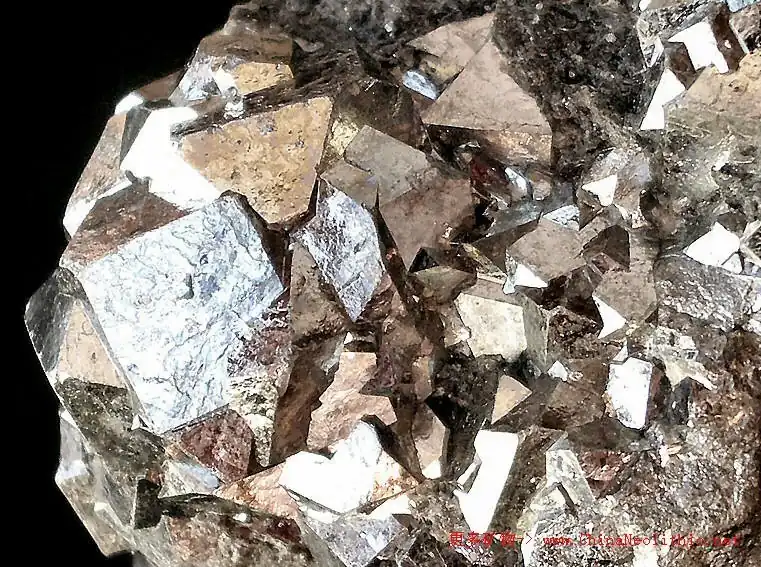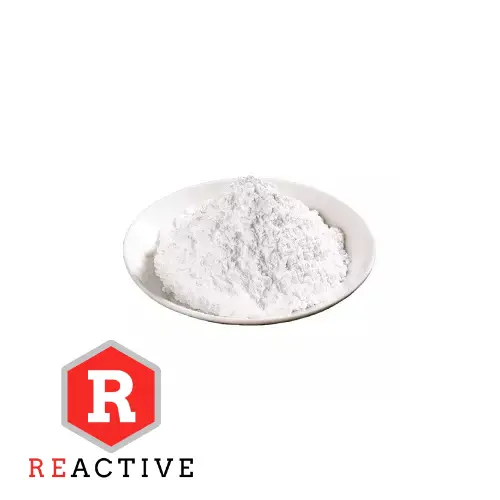Abstract
A method for preparing magnesium-cobalt metal composite oxide using active magnesium oxide as raw material relates to a method for preparing metal composite oxide. In the first step, active magnesium oxide and cobalt chloride are used as raw materials to prepare magnesium-cobalt metal composite oxide; in the second step, active magnesium oxide is dissolved in water to form a hydrated magnesium oxide complex; in the third step, cobalt chloride is prepared into an aqueous solution of a certain concentration and added dropwise to the hydrated magnesium oxide complex solution. In the fourth step, the emulsion is filtered, washed, dried, and then calcined to obtain Mg2CoO4 and MgCo2O4 magnesium-cobalt composite metal oxides. The magnesium-cobalt metal composite oxide is prepared using active magnesium oxide and cobalt chloride as raw materials, and the copolymerization phenomenon of metal ion complexes in aqueous solution is utilized to form metal ion water and hydroxyl copolymers, without any additives, and the method is simple. The prepared Mg2CoO4 and MgCo2O4 magnesium-cobalt composite metal oxides have a bimetallic center and can be used as catalysts or carriers for certain organic reactions.

Description
A method for preparing magnesium-cobalt metal composite oxide using active magnesium oxide as raw material
Technical field
The present invention relates to a method for preparing metal composite oxides, and in particular to a method for preparing magnesium-cobalt metal composite oxide using active magnesium oxide as raw material.
Background technology
Compound metal oxides related to magnesium and transition metals have good application backgrounds in the field of catalysis, such as magnesium-aluminum composite metal oxides, magnesium-manganese composite metal oxides, magnesium-iron composite metal oxides, copper-cobalt composite metal oxides, copper-chromium composite metal oxides, copper-iron composite metal oxides, etc. Most of the composite metal oxides have good applications in solid propellants. For example, when magnesium-iron composite metal oxides, copper-cobalt composite metal oxides, copper-chromium composite metal oxides, and copper-iron composite metal oxides are used as burning rate catalysts in solid propellants, the pyrolysis temperature of AP can be significantly reduced, the primary and secondary combustion efficiencies of boron powder can be improved, and the catalytic performance can be further improved after further modification and coating of the catalyst, and the compatibility with terminal hydroxyl polybutadiene in the system is also solved. Composite metal oxides have stable crystal structures, good optical, electrical and magnetic properties. They are important laser materials, pyroelectric materials, piezoelectric materials and strong magnetic materials, etc., and are widely used. They are used in burning rate catalysts for solid propellants, photocatalytic decomposition of water to produce hydrogen, and hydrocarbon reforming reactions in the petrochemical industry. The lattice distortion caused by their mutual doping leads to more defects in the grains of composite oxides, and the number of active centers is significantly increased. Their comprehensive performance is often better than that of single oxides. Composite metal oxides also have high redox, hydrogenolysis, isomerization, electrocatalytic activity, etc. As a new functional material with gas sensitivity, giant magnetoresistance, conductivity and other characteristics, they have broad application prospects in information, energy, electronics, metallurgy, chemical industry, biology and medicine.
Magnesium-containing transition metal composite oxides are multi-component complex oxides composed of magnesium and one or more transition metal oxides. They have better properties in electricity, light, magnetism and other aspects than single oxides. They also have good stability, corrosion resistance, high temperature resistance, high hardness and other properties. Among cobalt-based composite oxides, there are few reports on magnesium-cobalt composite oxides, which are composite bimetallic oxides of magnesium oxide and cobalt oxide. Cobalt-based oxides can be used for synthesis of gas and oil or as an auxiliary agent for the synthesis of low-carbon alcohols, etc. Cobalt-based compounds or mixtures of Co and other metal oxides have real industrial application value prospects. Cobalt oxide nanocatalysts have good catalytic efficiency for the decomposition reaction of N2O=N2+O2. Research in recent years has found that cobalt oxide and cobalt hydroxide can significantly improve the performance of batteries: increase the high output power and specific capacity of batteries, increase the life of batteries during charge and discharge cycles, reduce the phenomenon of automatic discharge and improve the overcharge resistance, etc. They are excellent battery additives. In addition, it also has great research potential in the fields of magnetic materials and electrode materials. .
The interaction between Co and Mg in magnesium-cobalt composite metal oxides is conducive to the activation of active sites, thereby improving catalytic performance, reducing reaction temperature and other reaction conditions. Cobalt oxide is a common catalyst or catalyst carrier, which shows good catalytic performance in many reactions. The active sites of magnesium oxide can inhibit the side reactions in the reaction.
my country is a country with abundant magnesium resources. The total reserves of magnesite are 3.1 billion tons, accounting for more than a quarter of the world’s total reserves. The high value-added utilization of magnesite has become the focus of research.
Since cobalt oxide and magnesium oxide can be used as catalysts in many reactions, and composite metal oxides have many properties superior to single metal oxides, MgO and CoCl2 are used as raw materials to react to obtain the precursor magnesium-cobalt composite metal hydroxide. After calcination, the catalysts with molecular formulas of Mg2CoO4 and MgCo2O4 according to XRD analysis are obtained. The prepared magnesium-cobalt composite metal oxide is a composite oxide with a bimetallic center, which can be used as a catalyst or carrier for certain organic reactions, in which Mg as a base center can inhibit the side reactions in chemical reactions. Co in Mg2CoO4 and MgCo2O4 catalysts and Co in loaded CoO are acidic centers. Since they have unshared electrons, they can obtain electrons from organic matter to promote organic reactions.
According to the polymerization phenomenon of bimetallic ions in aqueous solution, a spatial network of metal hydroxy polymers is formed. This method is simple to operate. Compared with other methods, it retains the original natural structure; it has low requirements for equipment and technology; it does not introduce other additives, and the product purity is high; the cost is low; because the OH- in the solution is gradually released, the morphology of the obtained product is controllable.
Invention content
The purpose of the present invention is to provide a method for preparing magnesium-cobalt metal composite oxide using active magnesium oxide as a raw material. The method utilizes the copolymerization phenomenon of metal ion complexes in aqueous solution to prepare magnesium-cobalt metal composite oxide. The prepared Mg2CoO4 and MgCo2O4 magnesium-cobalt composite metal oxides have a bimetallic center and can be used as a catalyst or carrier for certain organic reactions.
The purpose of the present invention is achieved through the following technical scheme:
A method for preparing magnesium-cobalt metal composite oxide using active magnesium oxide as raw material, the method comprising the following processes:
the first step, using active magnesium oxide and cobalt chloride as raw materials to prepare magnesium-cobalt metal composite oxide;
the second step, dissolving active magnesium oxide in water to form a hydrated magnesium oxide complex;
the third step, preparing cobalt chloride into an aqueous solution of a certain concentration, and dripping it into the hydrated magnesium oxide complex solution;
the fourth step, filtering, washing, drying and calcining the emulsion to obtain Mg2CoO4 and MgCo2O4 magnesium-cobalt composite metal oxides;
The specific preparation steps are as follows:
(1) Pre-treat the active magnesium oxide and calcine it in a muffle furnace at 600℃ for 2h; after each recovery of activity, it can be used for 4 days. If it is used again after 4 days, it needs to be restored by the above steps again;
(2) Weigh 4g of the calcined active magnesium oxide and add it to a 250ml three-necked flask, add 100ml of distilled water to the three-necked flask, and ultrasonically react at 50℃ for 1h;
(3) Measure 1mol/L cobalt chloride solution and add it dropwise to the magnesium oxide solution. After the addition is completed, the pH value is measured. When the pH value stabilizes (about 1.5 hours), the experiment is stopped;
(4) 100 mL of distilled water is added, the emulsion is filtered with a Persian funnel, and then washed repeatedly with about 100 mL of anhydrous ethanol for 2-3 times;
(5) The filter cake is placed in a vacuum drying oven at 80°C (the boiling point of anhydrous ethanol is 78.3°C) and dried for 2-3 hours to obtain a magnesium-nickel composite oxide precursor;
(6) The ground material is calcined at 750°C for 2 hours to obtain a solid powder.
The advantages and effects of the present invention are:
1. The present invention proposes a method for preparing magnesium-cobalt metal composite oxide using active magnesium oxide and cobalt chloride as raw materials by utilizing the polymerization phenomenon of metal ions in an aqueous solution, without any additives, with a simple method and low cost.
2. Mg2CoO4 and MgCo2O4 magnesium-cobalt composite metal oxides are prepared.
3. The prepared Mg2CoO4 and MgCo2O4 magnesium-cobalt composite metal oxides have a bimetallic center and can be used as a catalyst or carrier for certain organic reactions.
Specific implementation methods
The present invention is described in detail below in conjunction with the embodiments.
1. Basic principle of the present invention
Magnesium oxide dissolves in water to generate hydrated magnesium oxide, which then generates hydroxy magnesium ions. The solution is alkaline. In the presence of more hydroxide ions, a hydroxy hydrated magnesium ion complex is formed.
MgO+H2O→[Mg(OH)]①
[Mg(OH)]++OH–→[Mg(OH)2](aq)②
[Mg(OH)2](aq)+OH–→[Mg(OH)3]–③
[Mg(OH)3]–+OH–→[Mg(OH)4]2–④
[Mg(OH)4]2–+OH–→[Mg(OH)5]3–⑤
[Mg(OH)5]3–+OH–→[Mg(OH)6]4–⑥
In nickel chloride solution, as the concentration of nickel chloride increases, the acidity of the solution increases, and when a certain pH value is reached, a hydroxyl hydrated nickel ion complex is formed,
Co2++H2O→[Co(OH)]++H+………………⑦
[Co(OH)]++H2O→[Co(OH)2](aq)+H+………………⑧
[Co(OH)2](aq)+H2O→[Co(OH)3]–+H+………………⑨
[Co(OH)3]–+H2O→[Co(OH)4]2-+H+………………⑩
Using the different acidity and alkalinity of the two, under a certain proportion and a certain pH value of the solution, a magnesium cobalt water and hydroxyl polymer with a spatial network structure is formed.
2. Basic scheme of the present invention
In the first step, active magnesium oxide is dissolved in water to form a hydrated magnesium oxide complex; in the second step, cobalt chloride is prepared into an aqueous solution of a certain concentration and added dropwise to the hydrated magnesium oxide complex solution. In the third step, the emulsion is filtered, washed, dried and then calcined to obtain Mg2CoO4 and MgCo2O4 magnesium-cobalt composite metal oxides.
3. Technical method of the present invention
This project uses active magnesium oxide and cobalt chloride as raw materials, utilizes the polymerization phenomenon of metal ions in aqueous solution to prepare magnesium-cobalt copolymer emulsion, and after filtering, washing and drying, calcined to obtain Mg2CoO4 and MgCo2O4 magnesium-cobalt composite metal oxides.
4. Specific implementation plan of the present invention
(1) Active magnesium oxide is pretreated and calcined in a muffle furnace at 600°C for 2h. After each recovery of activity, it can be used for 4 days. After 4 days, it needs to be restored again by the above steps.
(2) Weigh 4g of calcined active magnesium oxide and add it to a 250ml three-necked flask, add 100ml of distilled water to the three-necked flask, and react at 50°C for 1h.
(3) Take 1 mol/L cobalt chloride solution and add it dropwise to the magnesium oxide solution. After the addition is completed, measure the pH value. When the pH value stabilizes (about 1.5 hours), stop the experiment.
(7) Add 100 mL of distilled water, filter the emulsion with a Persian funnel, and then wash it repeatedly with about 100 mL of anhydrous ethanol for 2-3 times.
Place the filter cake in a vacuum drying oven at 80°C (the boiling point of anhydrous ethanol is 78.3°C) and dry it for 2-3 hours to obtain a magnesium-nickel composite oxide precursor.

